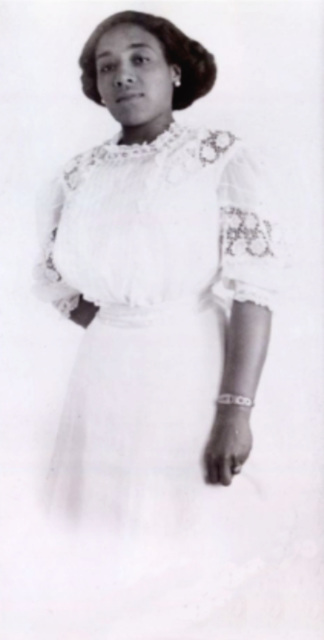Daisy Turner
Emma Louise Hyers
Walker & May
McIntosh and King
Mae Virginia Cowdery
Pearl Hobson
Billie Allen
Gertrude Saunders
Valaida Snow: Overlooked No More
Hyers Sisters: Emma and Anna
Arabella Fields: The Black Nightingale
Marion Smart
Lorain High School Yearbook Photo
Lillian Evanti in Costume as Lakmé
Jackie Ormes: Creator of Torchy Brown
Queen of Swing: Norma Miller
Cole and Wiley
Barbara McNair
Hyers Sisters
Frederick J Piper
Aida Overton Walker
Hiding in Plain Site: Joveddah de Rajah & Co.
Hattie McIntosh
Snakehips: Earl Tucker
Bessie L Gillam
Something Good Negro Kiss
Aida Overton Walker
Juanita Moore
Drag King: Miss Florence Hines
Mattie Wilkes
The Josephine Baker of Berlin: Ruth Bayton
Katherine Dunham performing in Floyd's Guitar Blue…
She Made Cartoon TV History: Patrice Holloway
Oscar Micheaux: America's First Black Director
Aida Overton Walker
Ernest Hogan
W. Henry Thomas
Jennie Scheper
Gertrude Saunders
An Easter Lily
The Creole Nightingale
Arabella Fields: The Black Nightingale
The Cakewalking Couple: Johnson and Dean
Anna Madah Hyers
Eartha Kitt
See also...
Authorizations, license
-
Visible by: Everyone -
All rights reserved
-
55 visits
Lauretta Green Butler


In 1916 Lauretta Green Butler (1881 - 1952) opened the first black professional dance studio in Los Angeles, California. Born in LA, Butler began her musical career while serving as a church pianist. She was also Superintendent of the State Federation of Music for six years.
Her parents were Joseph and Amanda (Shelton) Green. In the early pioneer days Mr. and Mrs. Green operated the "Alpha," a well known rooming and boarding house.
As a musician Lauretta performed and traveled with some of the country's best black orchestras. When she returned to Los Angeles, she gave up her musical career and opened a professional dance studio for children --- the first such venture in the country. The studio, which taught children age two to teenagers, taught dance, singing, and mime.
Butler presented her first Kiddie Minstrel Review in 1917, establishing herself as the foremost producer of children's acts. The studio was renamed the Kiddie Review around 1923, eliminating blackface makeup. The "Butler Kids," as her students became known, were in constant demand. They performed for social events, on military bases, in the movie industry, and elsewhere. She trained many future child stars both black and white. Some were members of the Little Rascals and Our Gang series. Among the legendary stage and screen stars trained there was Dorothy Dandridge when she was a member of the Dandridge Trio with her sister, Vivian and best friend Etta Jones as well as Wendell Franklin, the first African American member of the Director's Guild.
Butler and her nationally famous Kiddies made two trips to Hawaii. On the second trip they witnessed the bombing of Pearl Harbor, and was detained on the island for 5 1/2 months before the government evacuated them.
Much of her services were generously donated to philanthropic causes, also giving many children training without compensation.
Butler's studio closed sometime in the 1940s/1950s.
Sources: Black Women in America by Darlene Clark Hine (Vol 1.) (1998); Black Firsts: 4,000 Ground-Breaking and Pioneering Historical Events by Jessie Carney Smith (1994); Negro's Who's Who (1948); UCLA Collections and Miriam Matthews Photograph Collection
Her parents were Joseph and Amanda (Shelton) Green. In the early pioneer days Mr. and Mrs. Green operated the "Alpha," a well known rooming and boarding house.
As a musician Lauretta performed and traveled with some of the country's best black orchestras. When she returned to Los Angeles, she gave up her musical career and opened a professional dance studio for children --- the first such venture in the country. The studio, which taught children age two to teenagers, taught dance, singing, and mime.
Butler presented her first Kiddie Minstrel Review in 1917, establishing herself as the foremost producer of children's acts. The studio was renamed the Kiddie Review around 1923, eliminating blackface makeup. The "Butler Kids," as her students became known, were in constant demand. They performed for social events, on military bases, in the movie industry, and elsewhere. She trained many future child stars both black and white. Some were members of the Little Rascals and Our Gang series. Among the legendary stage and screen stars trained there was Dorothy Dandridge when she was a member of the Dandridge Trio with her sister, Vivian and best friend Etta Jones as well as Wendell Franklin, the first African American member of the Director's Guild.
Butler and her nationally famous Kiddies made two trips to Hawaii. On the second trip they witnessed the bombing of Pearl Harbor, and was detained on the island for 5 1/2 months before the government evacuated them.
Much of her services were generously donated to philanthropic causes, also giving many children training without compensation.
Butler's studio closed sometime in the 1940s/1950s.
Sources: Black Women in America by Darlene Clark Hine (Vol 1.) (1998); Black Firsts: 4,000 Ground-Breaking and Pioneering Historical Events by Jessie Carney Smith (1994); Negro's Who's Who (1948); UCLA Collections and Miriam Matthews Photograph Collection
- Keyboard shortcuts:
Jump to top
RSS feed- Latest comments - Subscribe to the comment feeds of this photo
- ipernity © 2007-2025
- Help & Contact
|
Club news
|
About ipernity
|
History |
ipernity Club & Prices |
Guide of good conduct
Donate | Group guidelines | Privacy policy | Terms of use | Statutes | In memoria -
Facebook
Twitter
